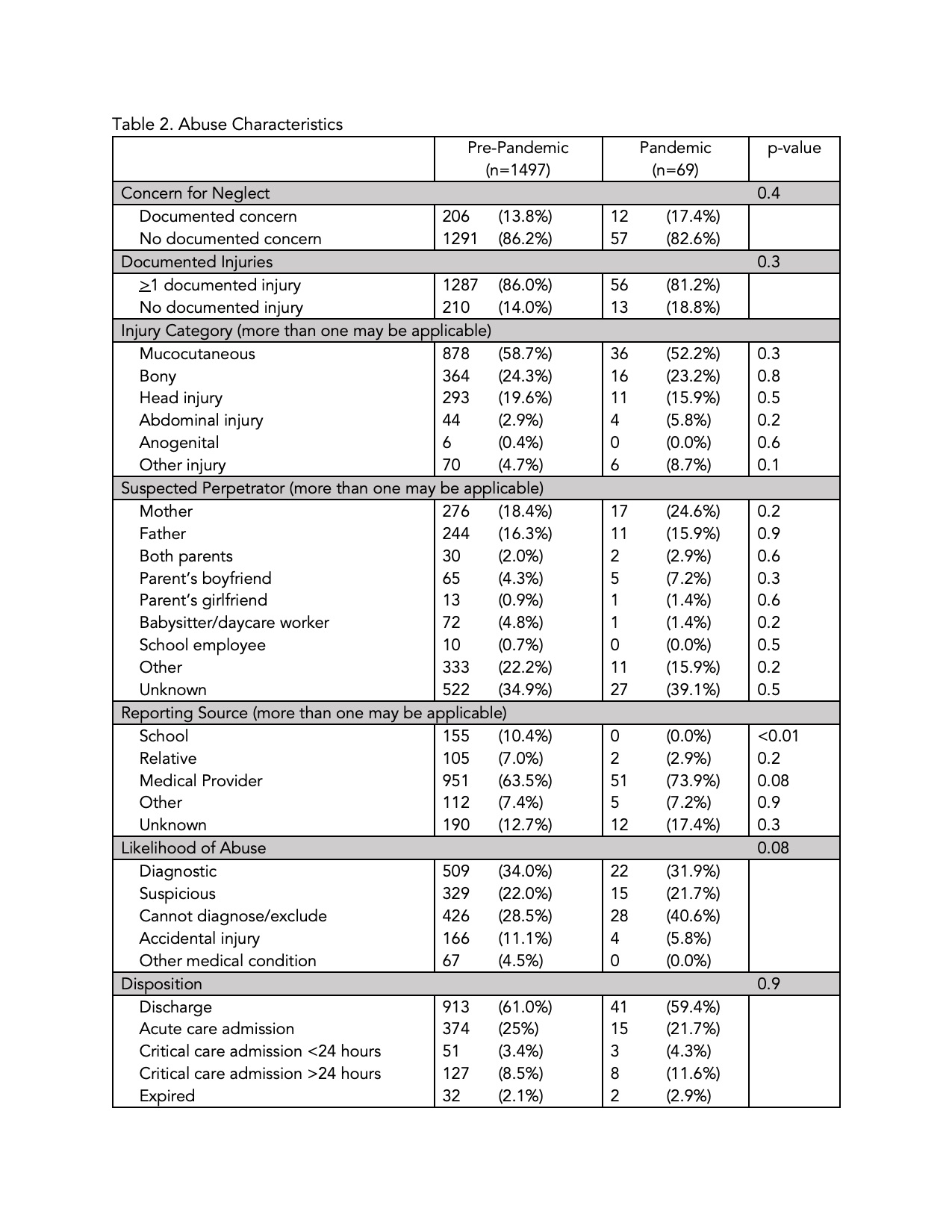Child Abuse & Neglect
Category: Abstract Submission
Child Abuse & Neglect II
231 - Child and Adolescent Protection Center Referrals in the Mid-Atlantic United States Before and During the COVID-19 Pandemic
Monday, April 25, 2022
3:30 PM - 6:00 PM US MT
Poster Number: 231
Publication Number: 231.402
Publication Number: 231.402
Simone L. Lawson, Children's National Health System, Washington, DC, United States; Theresa Bullen, George Washington University School of Medicine and Health Sciences, Washington, DC, United States; Christian Young-Anderson, Children's National Health System, Springdale, MD, United States; Jennifer Fritzeen, Children's National Health System, Washington, DC, United States; Allison M. Jackson, George Washington University School of Medicine and Health Sciences, Washington, DC, United States

Theresa Bullen, MS
Medical Student
George Washington University School of Medicine and Health Sciences
Washington, District of Columbia, United States
Presenting Author(s)
Background: As the COVID-19 pandemic progressed, there were growing concerns for the how it could affect the frequency and severity of child abuse and neglect (CAN). Families spent increased time at home under stressful circumstances, with decreased social support, and additional employment and financial instability - potentially increasing the risk for CAN. Meanwhile, children were sequestered at home, away from trusted adults at school, the leading source of reports for suspected CAN. As the pandemic has continued, there have been anecdotal stories of increased severity of CAN cases across the country. However, as studies have emerged, outcomes have been mixed, warranting review of additional data.
Objective:
To review the characteristics of cases referred to the Child and Adolescent Protection Center (CAPC) before and during the COVID-19 pandemic.
Design/Methods:
This is a retrospective chart review of referrals to CAPC at a level 1 free-standing, urban, academic children’s hospital system from January 2015 to June 2020. We used Pearson’s chi-square testing to compare characteristics of child maltreatment cases reported to CAPC before and after declaration of the COVID-19 pandemic in March 2020. Comparison variables included patient demographics, injury type, concern for neglect, and alleged perpetrator. We used hospital/PICU admission rates as a marker for injury severity.
Results: A total of 1566 charts were included for review - 1497 before the COVID-19 pandemic declaration and 69 after. Demographics of children referred to CAPC in both periods were similar (Table 1). There was no change in the percentage of cases concerning for neglect (OR 0.8, 95%CI 0.4,1.4), and the frequency of documented injuries in each group was similar (OR 1.4, 95%CI 0.8,2.6). There was no overall difference in the types of injuries documented (Table 2), but the percentage of child protection referrals initiated by school personnel declined during the pandemic (p < 0.01). We did not observe a change in the relationships of the alleged perpetrators to the victims. Our data do not suggest increased severity of injuries due to CAN during the pandemic, based on admission rates, critical care, or fatality of cases (Table 2).Conclusion(s): Our data suggest there was not a significant difference in the characteristics of cases reported to CAPC before and during the early months of the COVID-19 pandemic. However, as predicted, a smaller proportion of child protection reports came from school personnel, likely a result of virtual learning. Continued research is needed to elucidate potential ongoing effects of the COVID-19 pandemic on CAN cases.
Table 1. Participant Demographics.jpg)
Table 2. Abuse Characteristics
Objective:
To review the characteristics of cases referred to the Child and Adolescent Protection Center (CAPC) before and during the COVID-19 pandemic.
Design/Methods:
This is a retrospective chart review of referrals to CAPC at a level 1 free-standing, urban, academic children’s hospital system from January 2015 to June 2020. We used Pearson’s chi-square testing to compare characteristics of child maltreatment cases reported to CAPC before and after declaration of the COVID-19 pandemic in March 2020. Comparison variables included patient demographics, injury type, concern for neglect, and alleged perpetrator. We used hospital/PICU admission rates as a marker for injury severity.
Results: A total of 1566 charts were included for review - 1497 before the COVID-19 pandemic declaration and 69 after. Demographics of children referred to CAPC in both periods were similar (Table 1). There was no change in the percentage of cases concerning for neglect (OR 0.8, 95%CI 0.4,1.4), and the frequency of documented injuries in each group was similar (OR 1.4, 95%CI 0.8,2.6). There was no overall difference in the types of injuries documented (Table 2), but the percentage of child protection referrals initiated by school personnel declined during the pandemic (p < 0.01). We did not observe a change in the relationships of the alleged perpetrators to the victims. Our data do not suggest increased severity of injuries due to CAN during the pandemic, based on admission rates, critical care, or fatality of cases (Table 2).Conclusion(s): Our data suggest there was not a significant difference in the characteristics of cases reported to CAPC before and during the early months of the COVID-19 pandemic. However, as predicted, a smaller proportion of child protection reports came from school personnel, likely a result of virtual learning. Continued research is needed to elucidate potential ongoing effects of the COVID-19 pandemic on CAN cases.
Table 1. Participant Demographics
.jpg)
Table 2. Abuse Characteristics

